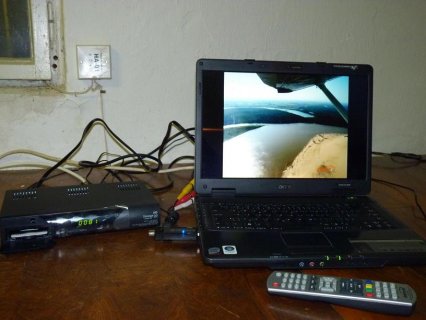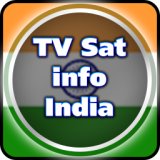
You must select the satellite first and then click on the map. If you change satellite, click the map again nearby the original point till the satellite pointing angles calculate again.
Centre the map around:
Choose the satellite you want to see using the pull down menus at box at the lower left. Using your mouse cursor move it near your location and then double click or simply drag the map. The map image will move so that the chosen point is in the centre. The latitude and longitude of the dot at the centre of the map is then displayed below the map, together with your satellite dish pointing angles: azimuth, elevation and polarisation. To improve accuracy, click on the plus sign in the scale boxes at the left side of the map. The scale changes so that you can home in accurately on your location. Repeat several times. Select Satellite or Hybrid version and see the satellite photo image of the ground or even a view of your own house as seen from space !
Dish pointing (Azimuth and elevation mount):
Set the dish elevation (up/down) angle first. There may be a scale on the back. An inclinometer may be of use if you know the dish elevation offset angle. Set the feed rotation polarisation angle also. There may be polarisation rotation scale on the LNB feed horn throat. Facing the satellite, clockwise polarisation is positive, negative is anticlockwise. For the azimuth angle (sideways) use a magnetic compass and swing the dish boldly sideways to find the satellite on the first swing. Then spend half an hour peaking up. Peaking up is really important for long term service quality and minimum outage time during rain fades.
Dish pointing (Polar mount):
Only your latitude matters. Set the main motor axis angle and the small downward tilt of the dish and with the motor central align the dish towards the due south satellite. Motor rotation angles to the east are positive, to the west negative.
You can also try this geocoder, just type in the name of your town or city - it might work...
The India map comes with the following cities and towns marked Amritsar, New Delhi, Jaipur, Kanpur, Patna, Varanasi, Ahmadabad, Mumbai, Pune, Nagpur, Kolkata, Hyderabad, Bangalore, Chennai and Madurai. As you expand the scale to look more closely, you will see more towns marked and named. The starting satellite shown is New Skies NSS-6 at 95 east, Intelsat 4 (was called PAS 4) at 72 deg east longitude. You can try INSAT at 74 deg east longitude, above the equator. Choose your required satellite.
Safety Warning: The results of this page may be in error. The latitude and longitude are not intended for the navigation of aircraft, ship or other vehicle purposes. Dish pointing angles may be wrong. Magnetic azimuth bearings are approximate. Use is entirely at your own risk. Apply common sense and don't believe every number that comes out of a computer system. Take care with satellite dish pointing to not injure others by dropping tools or hurting yourself by falling down.
I believe there is a Viasat LinkStar hub satellite plus previous ViaSat installations of Skylinx and StarWire mesh networking systems, as well as a 9-meter ViaSat antenna at the hub in Voida UP (marked).

|
TV from India Mobile Application (ENKHO Holding GmbH)
|





